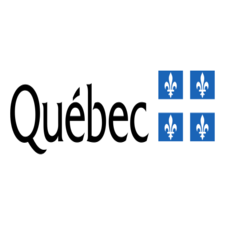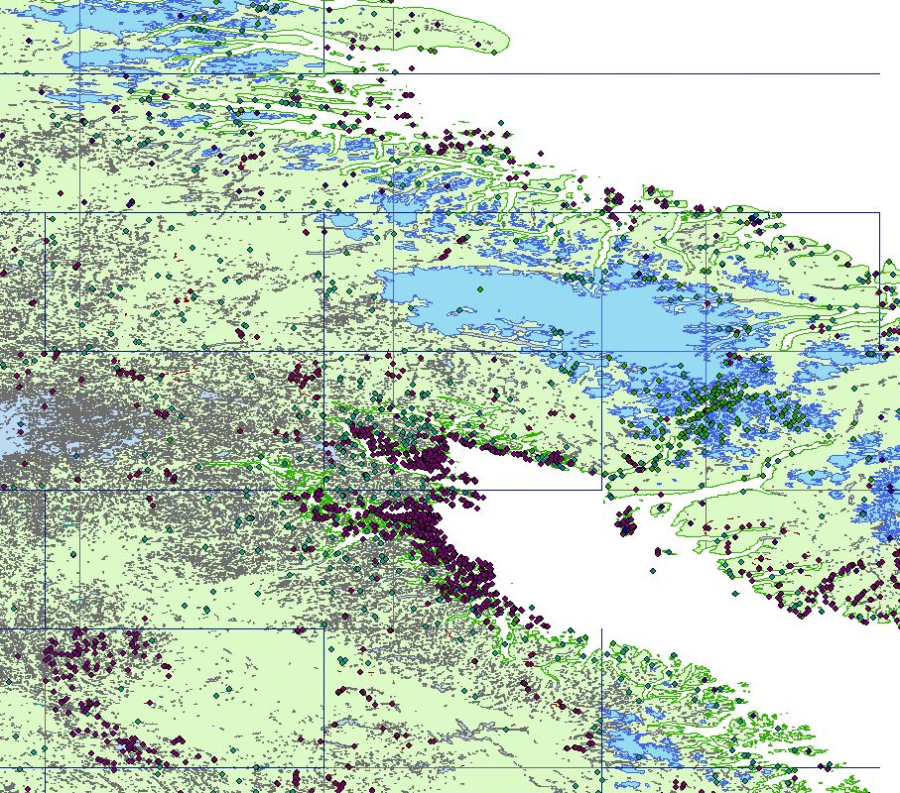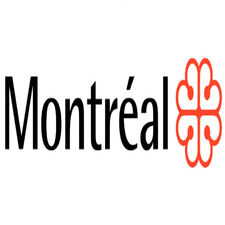Végétation
Type of resources
Available actions
Keywords
Contact for the resource
Provided by
Years
Representation types
Update frequencies
status
Service types
Scale
-

**Note that topographic maps at a scale of 1/20,000 are no longer updated. For the latest update date, see the [metadata] (ftp://transfert.mern.gouv.qc.ca/public/diffusion/RGQ/Documentation/BDTQ/Metadonnees_Topo-20K.xls). The reference cartographic data is now constituted according to a continuous information layer approach: ** * [AQNetwork+] (https://www.donneesquebec.ca/recherche/fr/dataset/adresses-quebec) * [Quebec Hydrographic Network Geobase (GRHQ)] (https://www.donneesquebec.ca/recherche/dataset/grhq) * [Administrative divisions on a scale of 1/20,000 (SDA)] (https://www.donneesquebec.ca/recherche/fr/dataset/decoupages-administratifs) * [Regional Coherent Hydro Digital Terrain Models (RTM)] (https://www.donneesquebec.ca/recherche/fr/dataset/modeles-numerique-de-terrain-hydro-coherents-a-l-echelle-regionale) *** Topographic maps at a scale of 1/20,000 are the official cartographic base of the Government of Quebec. They cover almost all of the territory south of the 52nd parallel. The data is extracted from aerial photographs at a scale of 1:40,000 taken at an altitude of 6,300 meters. They offer an accuracy of approximately four meters in planimetry. In hypsometry, it is about two meters for dimensional points and about five meters for level curves. Each file covers an area of approximately 250 km2. The main components are: * Hydrography (lakes, rivers, streams, swamps, etc.). * Vegetation (forests, peatlands, nurseries, orchards, etc.). * The constructions of man: * transport infrastructure (roads, bridges, airports, etc.); * buildings (mobile homes, silos, greenhouses, etc.); * equipment (docks, electrical power transmission lines, surface tanks, etc.); * designated areas (golf courses, loan benches, etc.). * The relief (the level curves are generally at an equidistance of ten meters and, in some cases, they can vary between eight and twenty meters).**This third party metadata element was translated using an automated translation tool (Amazon Translate).**
-

**Note that topographic maps at a scale of 1/100,000 are no longer updated. For the latest update date, see the [metadata] (ftp://transfert.mern.gouv.qc.ca/public/diffusion/RGQ/Documentation/BDAT/Metadonnees_BDAT100k_NordSud.xls). The reference map data is now constituted using a continuous information layer approach: ** * [AQNetwork+] (https://www.donneesquebec.ca/recherche/fr/dataset/adresses-quebec) * [Quebec Hydrographic Network Geobase (GRHQ)] (https://www.donneesquebec.ca/recherche/dataset/grhq) * [Administrative divisions on a scale of 1/20,000 (SDA)] (https://www.donneesquebec.ca/recherche/fr/dataset/decoupages-administratifs) * [Regional Coherent Hydro Digital Terrain Models (RTM)] (https://www.donneesquebec.ca/recherche/fr/dataset/modeles-numerique-de-terrain-hydro-coherents-a-l-echelle-regionale) ___ Topographic maps at a scale of 1/100,000 offer an overview of the occupation of Quebec territory at a scale of 1/100,000. A series in the south (266 sheets) and a series in the north (151 sheets) of the 53rd parallel cover the majority of Quebec. The data is less than 10 meters accurate and each file covers an area of approximately 4,000 km2, equivalent to 16 sheets at [a scale of 1/20,000] (https://www.donneesquebec.ca/recherche/fr/dataset/cartes-topographiques-a-l-echelle-de-1-20-000 “Topographic maps at a scale of 1/20,000”). Main components: * Hydrography (lakes of more than three hectares, permanent watercourses, swamps, etc.). * Vegetation (wooded areas and peatlands of more than 13 hectares). * The constructions of man: * transport infrastructures (passable roads, bridges, airports, etc.); * buildings larger than 12,500 m2; * equipment and designated areas. * The relief (level curves at an equidistance of 20 meters and elevation points). ##### Special features of the series south of the 53rd parallel * The data is obtained by generalizing map data at a scale of 1/20,000. Between the 51st and 53rd parallel, they are extracted from SPOT satellite imagery at 10 meters of resolution. * The data formats available for this series are: * ArcInfo cover (vector); * GeoTIFF, CCL projection (matrix); * GeoTIFF, MTM projection (matrix); * PDF (matrix). ##### Special features of the series north of the 53rd parallel * The data is obtained by generalizing cartographic data from Natural Resources Canada (CanVec product) at a scale of 1:50,000. Multi-source data, namely data from Adresses Québec, data on airports and hydrobases from the Ministère des Transports du Québec, and data on reservoirs from Hydro-Québec, increase the quality of this cartographic product on a scale of 1/100,000. * The data format available for this series is: * FGDB (vector).**This third party metadata element was translated using an automated translation tool (Amazon Translate).**
-

The VMap1 collection is a legacy product that is no longer supported. It may not meet current government standards. VMap1 is a vector digital topographic reference product developed by Natural Resources Canada (NRCan) and The Department of National Defence (DND). VMap1 complies with international military specifications vector map, level 1. There are 24 VMap1 libraries covering the Canadian territory. The National Topographic Data Base (NTDB) at scale of 1:250 000 is the main source used to populate the Canadian VMap1 Libraries. Administrative Boundaries from Statistics Canada are used to add international borders, provincial and Indian reserve limits. NRCan paper maps at scale of 1:250 000 and the information in the Canadian Geographical Names Data Base (CGNDB) are used to capture the names. The JOG (Joint Operations Graphic) paper maps were used by DND for the production of libraries 37, 38 and 66. Topographic features mainly from the NTDB have not been updated. VMap1 is published once and no product revision is planned.
-

__The link: *Access the data directory* is available in the section*Dataset Description Sheets; Additional Information*__. The mapping of **vegetation in Northern Québec** is a component of an extensive inventory carried out to meet knowledge acquisition needs as part of the economic, social and environmental development project “**Plan Nord**”. This inventory was carried out between **2010 and 2013**. Vegetation mapping in Northern Quebec provides information on terrestrial ecosystems, both forest and non-forest, such as the type of forest cover, undergrowth vegetation, disturbances, etc. A mapping approach based on remote sensing techniques (satellite images) was used. Ground and air control points contribute to the validation and clarification of the information interpreted. This map is available for the entire territory north of the 53rd parallel, which represents an area of approximately 680,000 km2. This territory is presented on topographical bases at a scale of 1/250,000. The minimum mapping area is 16 ha for vegetation and 3 ha for wetlands. **This third party metadata element was translated using an automated translation tool (Amazon Translate).**
-

__Update: The data released by the Directorate of Forest Inventories from 2021 to 2024 (DIF) has been replaced by data produced by the Directorate of Forest Protection from 2025. The link: *Access the data directory* is available in the section*Dataset Description Sheets; Additional Information*__. In 2025, the Forest Protection Directorate of the Ministry of Natural Resources and Forests (MRNF) began producing data that indicate the strength of forest vegetation. To produce the NBR index, the SGRF uses data provided by the Landsat (NASA) and Sentinel-2 (European Space Agency) satellites combined in the integrated satellite product “Harmonized Landsat and Sentinel-2 surface reflectance data set” designed by NASA. These satellite sensors measure light at specific frequencies called spectral bands. The light visible to human eyes corresponds to the red, blue, and green spectral bands as captured by a standard camera or camera. In addition, these satellite sensors offer the advantage of measuring infrared frequencies that are invisible to the human eye, which broadens the possibilities of observing natural phenomena under different characteristics. During the passage of a satellite over Quebec, only a part of Quebec is measured. The waves measured by Landsat and Sentinel-2 are blocked by clouds or by heavy air pollution such as forest fire smoke. Thus, to obtain a complete portrait of the Quebec forest for a given season, it is necessary to combine acquisitions from several different dates. The acquisition period for SGRF products extends from July 15 to September 15. This is a period that optimizes the observation of damage caused by spruce budworm. The products are delivered in the “Québec Lambert” coordinate reference system (EPSG: 32198). In addition, to keep only observations on forest territories, a mask was applied using the “CO_TER = Null” attribute from Quebec's ecoforest mapping as well as a mask to remove forest roads and paths. Because of this product, the DPF also produces DNBr images, pre-epidemic DNBr images, and time series (2014 to present). All documentation can be found in the lisez-moi.pdf file in the “Documentation” section.**This third party metadata element was translated using an automated translation tool (Amazon Translate).**
-

The numerical canopy model (MNC) is a representation of the altitude of the canopy. This 3D representation of the arboreal vegetation corresponds to the 2015 2D canopy. If necessary, the MNC can be coupled with the [Numerical Surface Model (MNS)] (/city-of-montreal/numeric-surface-model) 2015 in order to obtain more detailed coverage.**This third party metadata element was translated using an automated translation tool (Amazon Translate).**
-

Topographic mapping of northern indigenous villages is available for 23 villages. It was produced by photogrammetric method, from aerial photographs taken between 2009 and 2011. The accuracy of this mapping is of the order of ±40 centimeters in planimetry. In hypsometry, it is ±50 centimeters for dimensional points and ±1 meter for level curves. This precision may vary locally. The main components are: * Hydrography (body of water, watercourse, etc.); * Communication routes and road and airport infrastructures (road, bridge, airport, etc.); * Buildings and various structures (building, wharf, surface reservoir, etc.); * Vegetation; * Geomorphology; * Level curves at an equidistance of 2 meters; * The points listed. The following villages are available: * Akulivik; * Aupaluk; * Chisasibi; * Eastmain; * Inukjuak; * Ivujivik; * Kangiqsualujjuaq; * Kangiqsujuaq; * Kangirsuk; * Kawawachikamach; * Kuujjuaq; * Kuujjuarapik-Whapmagoostui; * Mistisini; * Nemaska; * Ouje-Bougoumou; * Puvirnituq; * Quaqtaq; * Hello; * Tasiujaq; * Umiujaq; * Waskaganish; * Waswanipi; * Wemindji.**This third party metadata element was translated using an automated translation tool (Amazon Translate).**
-

__The link: *Access the data directory* is available in the section*Dataset Description Sheets; Additional Information*__. The ecoforest inventory north of the northern limit of attributable forests is an extensive inventory that was carried out for specific knowledge acquisition needs. It was carried out between 2005 and 2009 as part of the work of the scientific committee responsible for examining the northern limit of attributable forests (Nordic Ecoforest Inventory Program [PIEN]). The data in this inventory comes from a cartography that is based both on the use of archival aerial photographs interpreted in three dimensions on the screen and on the analysis of satellite images. This dataset covers the territory between the 50th and 53rd parallel and covers an area of 242,000 km2. It includes forest and ecological mapping data (vegetation, surface deposits and drainage) as well as ecodendrometric sample plot data. This data is distributed by map sheet at a scale of 1/250,000. The minimum mapping area is 8 ha for stands and 4 ha for surface deposits. **This third party metadata element was translated using an automated translation tool (Amazon Translate).**
-

This collection is a legacy product that is no longer supported. It may not meet current government standards. Toporama is a digital topographic reference product using CanVec as source data. Developed by Natural Resources Canada (NRCan), Toporama covers the entire area of Canada's landmass and provides symbolic information in a geo-referenced raster format (GeoTIFF). The delimitation, content and representation of this product are similar to those of 1:50,000 scale topographical maps. Toporama is available in the following spatial reference systems: Universal Transverse Mercator (UTM) and geographic (latitude and longitude). Toporama is a product aimed at the general public that can be used by GPS system. The datasets in this collection present the version published in 2013.
-
Le service de cartes Web Toporama (SCW-Toporama) du Secteur des sciences de la Terre (SST) de Ressources naturelles Canada (RNCan) est un service Internet qui s'adresse principalement aux usagers et développeurs d'applications cartographiques en ligne. Ce service est compatible avec les normes et spécifications du service de cartes Web, version 1.1.1., de l'OpenGIS® Consortium (OGC) (http://www.opengeospatial.org/). L'accès au SCW-Toporama est sans frais et sans restrictions selon les termes de la Licence du gouvernement ouvert - Canada (http://ouvert.canada.ca/fr/licence-du-gouvernement-ouvert-canada). L'utilisation de ce service permet de construire une carte personnalisée qui utilise les meilleures données de base du SST pour une échelle donnée. Ces données sont réputées pour être précises et à jour. Elles sont regroupées sous 15 thèmes d'informations construits, selon l'échelle, à partir de CanVec 1/50 000, de la Base nationale de données topographiques (BNDT) 1/250 000 ou des données de base de l'Atlas du Canada.
 Arctic SDI catalogue
Arctic SDI catalogue